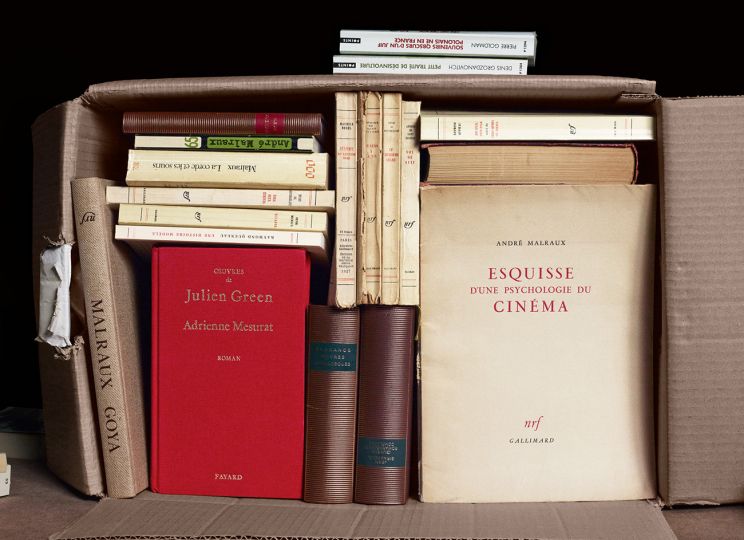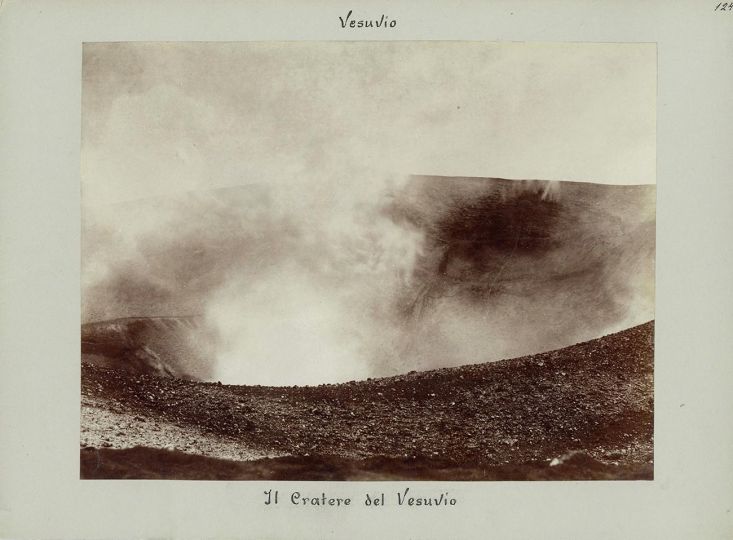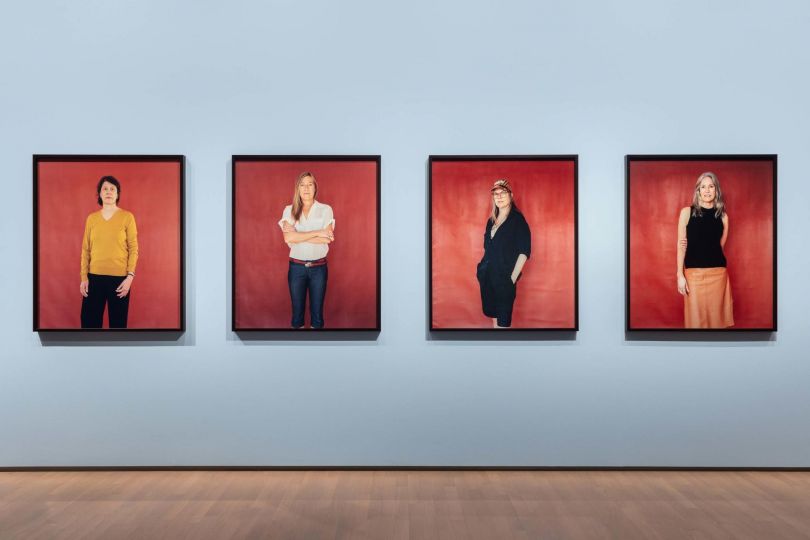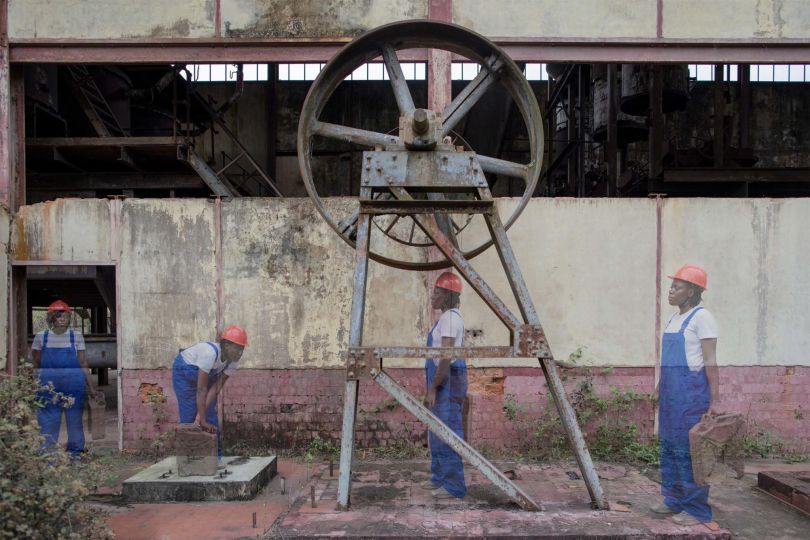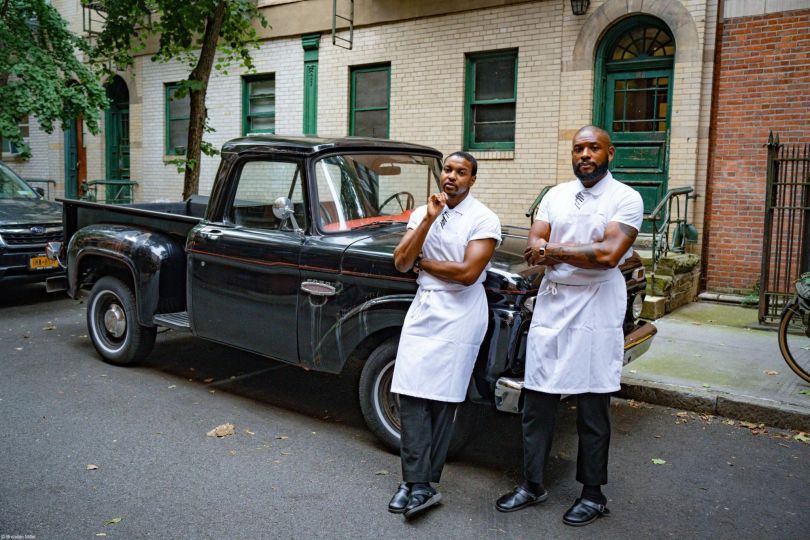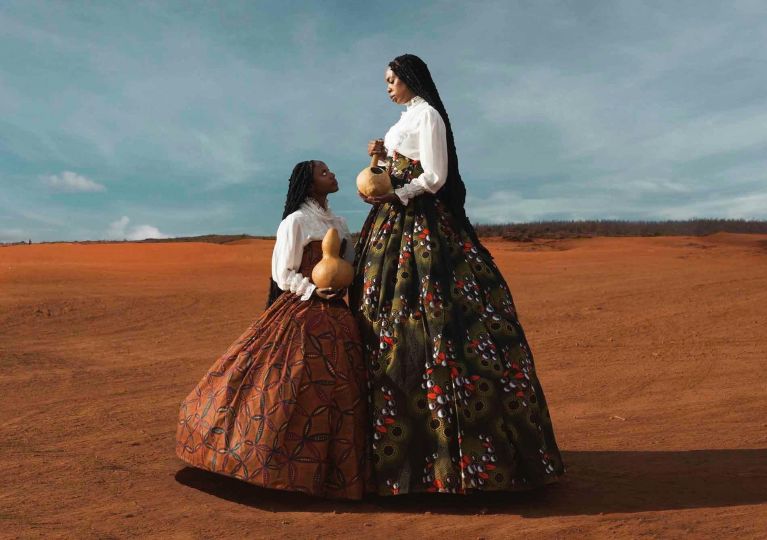Jean-Luc Godard died yesterday Tuesday September 13th. Back in 2021, we published an article on the work of Stéphan Crasneanscki. “When invited to explore the archive of the seminal film director, Crasneanscki photographed Godard’s personal collection of shot film, reel-to-reels and historical ephemera.” A privileged look at the spirit of this iconic director.
Libraryman : Stéphan Crasneanscki : What We Leave Behind – From Jean-Luc Godard’s Archive
Subsequent to a commissioned sound composition for Deutschlandradio, multidisciplinary artist Stéphan Crasneanscki (b. 1969, French) further examines his significant opus What We Leave Behind, on French film director Jean-Luc Godard’s archive, into book form. The book is divided into four comprehensive sections: boxes, collages, still lifes and notes.
When invited to explore the archive of the seminal film director, Crasneanscki photographed Godard’s personal collection of shot film, reel-to-reels and historical ephemera. The notes and references in the book attest to the passing of time, yet being saved from oblivion; as a fragmented creative map of a master film director’s artistic thought process. In addition to working with someone’s personal belongings and its cultural heritage, Crasneanscki also adds his own interpretation and admiration to the material’s constellation of ideas of identity, traceability, temporality, space, memory, existence, materiality and historicity.
The book contains a foreword by musician, author and poet Patti Smith (b. 1946, American), a conversation with filmmaker Abel Ferrara (b. 1951, American) and an essay written by film critic, historian and editor Antoine de Baecque (b. 1962, French).
Godard Inventory: How He Organizes His Library
Antoine de Baecque, Paris — ‘20
Boxes of books, boxes of VHS tapes, boxes of files, boxes of papers, and even boxes of boxes. Forty-three of them. They represent the move out of a two-bedroom apartment, the move of a sizable library. Each box is placed vertically and propped open by a hand that occasionally holds back a cardboard flap to keep it from closing or supports a book to keep it from falling. This is not the same hand that undertook the move, just a hand that focuses our attention and says: “Look inside.” It doesn’t rummage through any more than the eye does: you have to stay on the surface of things; you cannot penetrate the box as you would the intimacy of a life. It’s an observation, a trace: box #1, box #2, box #3… box #43.
All in all, we are presented with one hundred and sixty-four photographs.
First, we see a library, organized by author, theme, and Godard film; there is a lot of literature, a fair amount of essays, some cinema. The “Godard knowledge” inventory is presented across forty-three photographs. Among the classics, we find: Balzac, Stendhal, Diderot, Shakespeare, Chekhov, Racine, Victor Hugo, Ovid, Seneca, Lovecraft, Wilde, London. Among the twentieth-century authors: Rilke, Borges, Thomas Mann, Gide, Conrad, Brodsky, Cocteau, Artaud, Céline, Green, Bernanos, Valéry, Duras. Among the modern thinkers: lots of Sartre, Foucault, Barthes,
Jakobson and his Six Lectures on Sound and Meaning, Anna Seghers’s Transit, Nicolas Bourbaki’s Elements of the History of Mathematics, Albert Béguin’s Bernanos par lui-même, and Michel Leiris and Maurice Blanchot’s shorter volumes. Finally, a few contemporaries, but no novels: Alex Ross’s The Rest Is Noise, Avital Ronell’s Lignes de front [Front lines], Slavoj Žižek’s La Parallaxe [The Parallax], Elias Sanbar’s Figures du Palestinien [Figures of the Palestinian], Naomi Klein’s The Shock Doctrine, Jacques Rancière’s The Ignorant Master. There are monographic, even monomaniacal, boxes: a box dedicated to Malraux, with many old, dog-eared Gallimard editions; an “art history” box featuring Elie Faure and large illustrated volumes; a “thriller” box, including Chase, Hammett, Asimov, Richard Matheson’s I Am Legend; the six large volumes of Dictionnaire général des Oeuvres and the Old Testament; a Sartre/Beauvoir box; a “Germany” box including Germaine de Staël’s Germany, Wittgenstein, Nietszche, Jean-Michel Palmier’s Walter Benjamin, un itinéraire théorique, Junger, a beautiful photo of Brecht, Ludwig Hohl; a Russian box, with the Kolyma Tales, The Gulag Archipelago, Stanislawski, and Orlando Figues’ A People’s Tragedy: The Russian Revolution; a music box with Histoires de la musique [Histories of Music], a biography of Mozart and Glenn Gould’s memoirs; a Ramuz box filled to the brim. And then, cinema: volumes 5, 12, 13, and 14, large yellow reprints of the Cahiers du cinéma dated 1961-1964, Bazin’s What Is Cinema?, Bresson’s Notes on the Cinematograph, Sylvie Pierre’s Glauber Rocha, books on Maya Deren and Abel Gance, Robert Benayoun’s The Look of Buster Keaton; a Russian and Soviet cinema box set: Eisenstein, Vertov, Paradjanov and A History of the Russian and Soviet Film by Jay Leyda; a Hollywood box: Amis américains [American Friends] by [Betrand] Tavernier, Hitchcock-Truffaut, and a beautiful photo of John Ford at Monument Valley. (….)
Antoine de Baecque, Paris — ‘20
What We leave Behind
Photographs by Stéphan Crasneanscki
From Jean-Luc Godard’s Archive
Foreword by Patti Smith
Conversation with Abel Ferrara
Essay by Antoine de Baecque
Edited and designed by Tony Cederteg
Published by Libraryman
20 x 26 cm. 216 pages. 177 color plates.
Offset printed softcover with typography on front cover and spine in black foil. Linen thread bound.
ISBN 978–91–88113–45–0
Published in 2021.
https://www.libraryman.se/stephan-crasneanscki-what-we-leave-behind/

